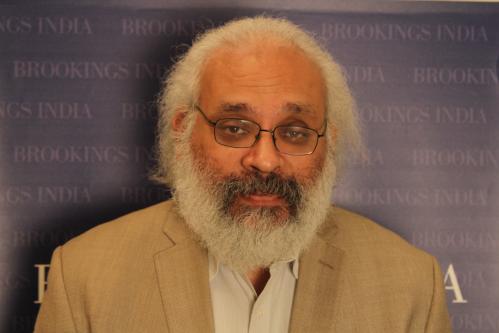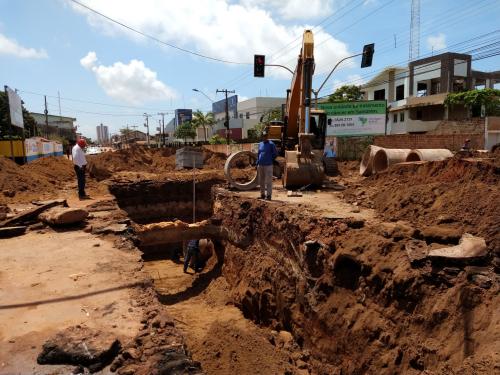Content from the Brookings Institution India Center is now archived. After seven years of an impactful partnership, as of September 11, 2020, Brookings India is now the Centre for Social and Economic Progress, an independent public policy institution based in India.
This article is a part of India 2024: Policy Priorities for the New Government, a compendium of policy briefs from scholars at Brookings India, edited by Dhruva Jaishankar and Zehra Kazmi, which identifies & addresses some of the most pressing challenges that India is likely to face in the next five years.
India continues to suffer from a number of systemic challenges, many dating back decades, when it comes to governance, the delivery of services, and financial sustainability. The next government should focus its efforts on a few areas.
Cut Out Middlemen
Today, a major scourge on governance in India – including in the energy sector – is the widespread presence of middlemen providing facilitation for a fee. They are visible outside transportation license authorities, electricity supply distribution offices, housing board offices, hospitals, and offices for registration of legal documents relating to land, housing, and loans. Additionally, the cost of legal documents is artificially inflated. The agricultural sector features middlemen facilitating loans from rural and cooperative banks, or private lenders giving high interest rates to farmers for fertilizers, seeds, and pesticides. Local markets are controlled by powerful lobbies and intermediaries, further affecting farmers. This cycle needs to be broken.
A major reason is that application forms for many public services in India are formatted to British colonial-era designs and defy logic in terms of meaningless information and bewildering processes. Forms and documentation need to be simplified. Today, a range of disruptive technologies can eradicate the scourge of corruption and make daily life easier. The smart use of information technologies, data analytics, and artificial intelligence can now benefit from 4G mobile network connectivity, which enjoys wide reach.
Reboot the Power Distribution Sector
The Government at both the Central and State levels has over the decades initiated major schemes to improve the financial and operational health of electricity distribution companies (Discoms). They have had multiple objectives, such as improving operations and technology, financial & structural reforms, and enabling electricity access to villages, rural households, and families below the poverty line. The latest and most ambitious scheme is Uday, launched in 2015 with multiple objectives to achieve debt restructuring, operational efficiency, and the adoption of smart technologies. However, the trajectory of results over the last three years have not met expectations. There is a real danger that a large number of discoms will again require financial oxygen: or as some experts say, an Uday 2 scheme. With a payment backlog of nearly Rs. 3,600 billion by discoms to electricity generators, another crisis is on the horizon.
To address this recurring challenge, the government should legislate the Electricity (Amendment) Bill 2014 and proposed Electricity (Amendment) Act 2018. It should address delays of agriculture subsidy payments to discoms by State Governments by ensuring a mechanism of timely direct benefit transfers (DBT) to the consumers from the Finance Commission’s state share. It should focus on checking and reducing losses due to theft of power, thus increasing revenues. Finally, it should integrate information and operations technologies, and create a Distribution Centre of Excellence at both the central and state level to ensure the implementation of the best practices drawn from entities that have a track record of excellent, consistent financial and operational performance results.
Investigate Bankruptcy and Non-Performing Assets
The last four to five years have seen a galaxy of examples – airlines, jewelry, pharmaceuticals, steel, power, shipping, and sugars – that have collapsed due to non-performing assets and the inability to pay back loans for various reasons. NPAs from the power generation sector alone comprise around 5.9% of the banking sector’s total outstanding advances of Rs. 4.73 trillion, according to the Economic Survey 2016-17. There is a common thread. Public and institutional funds have been squandered, resulting in the financial loss and erosion of investor confidence and the slowing down of economic growth with banks unable to lend funds to stimulate growth.
It is in the public interest to understand how and why this came about, and why billions in taxpayer funds were put to such poor use. There are many reasons: pure business failures due to unforeseen or disruptive events, poor corporate governance and risk management practices, industry specific events, the mismanagement and diversion of funds, commodity cycle reversals, the adverse impact of central and state policy changes, trade conflicts between nations, and economic grouping re-alignments. The equation becomes very complex if one had to identify the combination, proportion, and relative importance of such reasons. A white paper would be beneficial in highlighting the inadequacies and remedies needed in certain areas, such as the role of due diligence by lending institutions, banks, auditors, and credit rating agencies; policy and operational oversight by the Reserve Bank of India and the central government; corporate governance; the adverse impact of policy changes; and uncontrollable ‘black swan’ events for which specific remedies may not be available. Finally, there should be an objective of establishing early warning systems at institutional and corporate levels so that failures are not repeated, but instead lessons can be learned.




Commentary
India 2024: A clean India
May 17, 2019